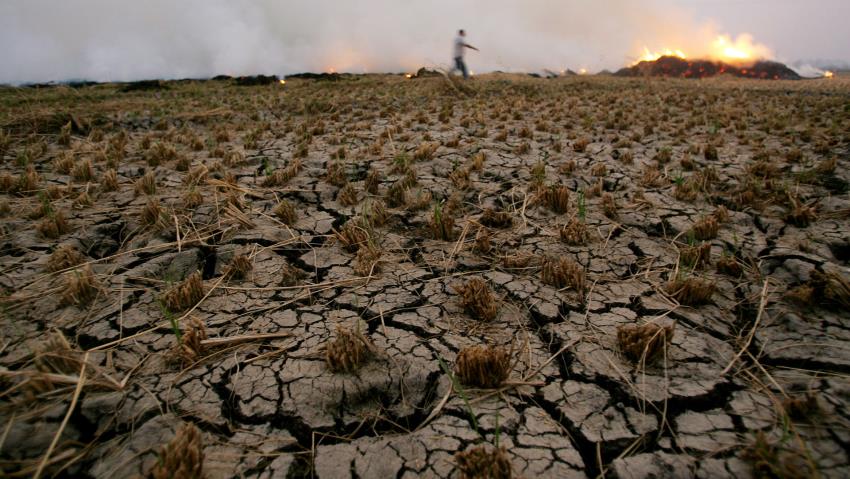Global temperatures in February 2016 spiked by a wider margin than any month ever recorded, according to data released by NASA, prompting increasing concerns about global warming.
Scientists reacted to the unprecedented surge by branding the record as a “shocker” while warning of a “climate emergency.”
The data from the American agency shows that the global surface temperature in February was 1.35 degrees Celsius warmer than the average temperature for the same month between 1951-1980.
The record temperatures for the month of February are not an isolated occurrence but are rather part of a wider trend. NASA did not just confirm that February was the warmest month on record but also that the two months prior had risen above the global norm as well. February was, in other words, the third consecutive month to break the global temperature record. While January had reached 1.14°C, December last year hit 1.1°C.
According to preliminary prognoses, the first half of March 2016 has seen the trend continue. The average global temperature is expected to increase by 1.5°C more than the average for the month of March during the reference period 1951-1980.
Gavin Schmidt, the director of NASA’s Goddard Institute for Space Studies in New York, reacted to the new figures simply with a “wow.” He went on to say, “Normally I don’t comment on individual months (too much weather, not enough climate), but last month was special.”
The meteorologists behind the climate blog Wunderground described the data as “a true shocker, and yet another reminder of the incessant long-term rise in global temperature resulting from human-produced greenhouse gases.”
“Averaged on a yearly basis,” the blog’s authors Jeff Masters and Bob Henson continued, “global temperatures are now around 1.0°C beyond where they stood in the late 19th century, when industrialization was ramping up,” citing previously released NASA data.
On his part, Stefan Rahmstorf of the German Potsdam Institute of Climate Impact Research and a visiting professorial fellow at the University of NSW said the new NASA analysis “is really quite stunning … it’s completely unprecedented.”
“Governments have promised to act [to curb greenhouse gas emissions] and they need to do better than what they promised in Paris” at the global climate summit last December, he continued.
Effects of Climate Change on Egypt
As the Wunderground blog pointed out, the impact of the rising global temperatures has been felt in all corners of the world. According to the February 2016 Catastrophe Report extreme weather disasters hit three countries – Vietnam, Zimbabwe, Fiji – costing at least 4 percent of their GDP. The International Disaster Database concluded that these disasters were the most expensive weather-related disasters in the recorded history of those nations.
The changing climate is also having a direct impact on Egypt and its population. In fact, the country is considered to be one of the most vulnerable to the effects of climate change. A rapidly growing population and accelerating urbanization puts immense pressures on the country’s water and land resources.
Climate change exacerbates Egypt’s water shortages and contributes to heat waves and the increasingly common and severe sand storms.
As the world’s biggest wheat importer, Egypt is also very vulnerable to global price fluctuations. In 2010, extreme heat destroyed the wheat harvest of Russia – a major wheat supplier – by more than a third, leading to skyrocketing prices. This affected millions of Egyptians as the price of bread – a key staple in the country – soared.
Also, being one of the most important economic sectors, Egypt’s agriculture is feeling the effects of the rising global temperatures. Increasingly rising sea levels means that sea water is pushed into the Nile Delta where vast agricultural lands are located, making it increasingly difficult – even impossible in some places – to cultivate crops, as the salt simply kills the plants. This poses a grave threat to Egypt’s food security.
Rising sea levels are also pushing people living in towns and villages by the north coast of Egypt to leave their homes. “People know their houses will be demolished in a few years,” said Salah Soliman, of Alexandria University’s faculty of agriculture.
Climate change could also have a long-term negative impact on Egypt’s tourism sector – a pillar of the country’s economy. Sea level rises would devastate tourist areas such as Matruh City and Alexandria. High levels of carbon dioxide in the atmosphere will also lead to ocean acidification, destroying coral reefs, which many tourists want to experience. According to a UN report it could also wipe out historic, cultural and archeological sites, which are crucial to attract tourists.







Comment (1)
[…] recorded in decades, as well floods that destroy houses in some rural areas. Last week, NASA also released a report showing February 2016’s global temperature as being the warmest by a wider margin than any […]